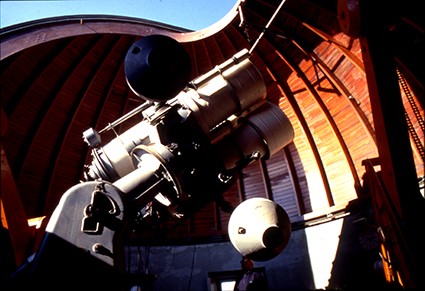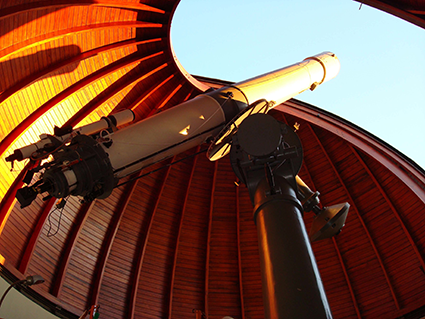Vatican Observatory
The origins of the Vatican Observatory date back to the early 17th century when Pope Gregory XIII showed interest in astronomy in the contex of the Copernican controversies. Christopher Clavius and Christoph Grienberger can be regarded as the first astronomers observing from the Tower of the Winds. Several ponitfical observatories existed in Rome, until Pope Pius XI moved the Observatory (Specola Vaticana) to the papal residence at Castel Gandolfo in the 1930. Earlier on the Specula Vatican took part in the Carte du ciel project securing 540 plates starting 1894.
For Castel Gandolfo, two telescopes were manufactured by the Carl Zeiss Company of Jena and operated starting September 1935.

The Zeiss Double Astrograph hosts a four lens objective with 40 cm aperture and a 60cm reflector. The former was used to image the Sky on photographic plates up to a size of 30x30 cm^2 at an image scale 1.42'/mm, while the latter was restricted to smaler plates. The double astrograph was operated until 1974. In addition

A 65 cm Schmidt telescope was installed and operated from 1957 to 1986. The archives of the Vatican Observatory hold almost 10,000 plates Barbieri et al., 2004)
More details at Telescopes of Castel Gandolfo.
Coverage
A Mollweide diagram shows the footprint of the plates